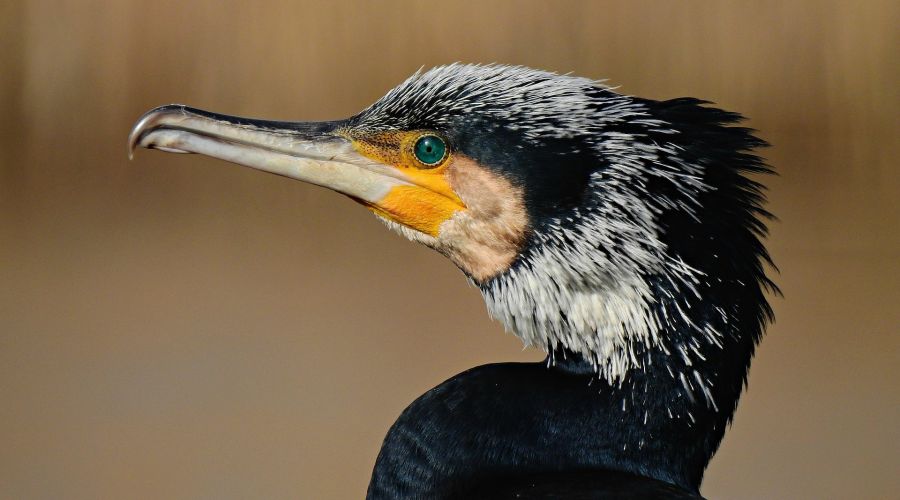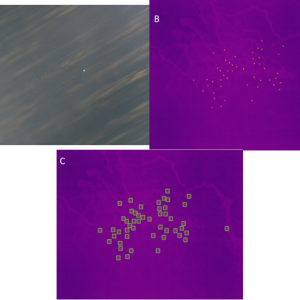How to count cormorants?

The importance of effective and efficient protection of endangered and protected animals is still relevant, and it can be assumed that with the undoubted success of efforts to return them to our nature, the importance of situations that today are inappropriately called conflict will also increase. Our aquaculture and fisheries, in general, are no exception in this respect. The losses caused by the protected (otter) or endangered (cormorant) fish-eating predators is partly compensated for fish farming entities based on the evaluation of the number of predators present according to the methodologies of the Nature Conservation Agency of the Czech Republic. The methods of determining cormorant and otter numbers on fish farms are defined in them in such a way as to minimize the influence of subjective factors (counting of cormorant individuals, evaluation of residence signs and their conversion to estimation of otter numbers) for the purposes of losses calculation. Nevertheless, these procedures are logically burdened with subjective error caused by different levels of expertise and experience of evaluators, instrumentation, or sampling frequency. For this reason, it is advisable to look for new options for monitoring, which would be more objective, conclusive and save the time required for monitoring. These advantages are brought about using camera systems in combination with modern computer image processing methods. As part of the project “Automation and objectification of piscivorous predator monitoring” (QK1920102), we created a solution for cormorant monitoring using drone photos, which is available to users via the website for free. The project was financially supported by the Ministry of Agriculture within the ZEMĚ program, mediated by the National Agency for Agricultural Research.
Currently, the number of cormorants in the Czech Republic is estimated at 813 breeding and 13,148 migrating and wintering birds in 2019 (RS ČR, internal data 2020), which caused a loss in aquaculture production of approximately CZK 100 million. While birds in nesting colonies contribute 13 million CZK to damages, losses caused by non-resident cormorants amount to 87 million CZK. Reimbursement of these losses to fishing enterprises, even if their extent does not fully correspond to real total extent, is based on the data reported by the monitoring of the applicants and the subsequent quantification carried out by the relevant experts. This undoubtedly increases the need to reduce subjective bias and methodological limits, which relate in particular to the difficulty in counting cormorant numbers in flocks exceeding 50–100 individuals.
The biggest weakness in monitoring the number of cormorants in the pond is the objective determination of their number. Two factors influence this: being there at the right time when the cormorants are on the pond and correctly counting the individuals that may overlap from the observer's point of view. To solve the first problem, an island system (Figure 1) was created, which is placed on a pond and can detect incoming cormorants. The system consists of a camera that can scan the entire sky (Figure 1) and a photovoltaic panel that recharges a battery that provides electricity for the camera. However, the processing of the video recording must be done on a computer, so the system is more suitable for determining the times when cormorants are present on the pond than for providing immediate information about their arrival.
To accurately determine the number of cormorants present on the pond, a system was created using an unmanned aircraft equipped with a so-called thermal camera. The drone operator will photograph the cormorants on the water, in the trees or on the island. After uploading the data to the web application, the software detects individual cormorants. Cormorants typically have a higher temperature than their surroundings, and because of this, they "glow" in the thermal camera recording. The software is thus able to determine their exact number with a success rate higher than 97 percent. The drone can photograph cormorants from a height of 30–130 meters without scaring them. Based on the detected cormorants, the web application can create an overview of the occurrence of cormorants on selected ponds and calculate losses based on the existing methodology.
Detailed information is available in the original article: Polenský, J., Regenda, J., Adámek, Z., Císař, P., 2022. Prospects for the monitoring of the great cormorant (Phalacrocorax carbo sinensis) using a drone and stationary cameras. Ecological Informatics 70, 101726. https://doi.org/10.1016/j.ecoinf.2022.101726
Link to web interface: http://wat.frov.jcu.cz/ login:
Testing data are here.
Picture description (see below): Example drone picture of cormorants sitting on the water. A – picture in visible spectre, B – picture from thermal camera, C – result of automatic detection (green rectangles).
Written by: Dipl. - Ing. petr Císař, Ph.D.




